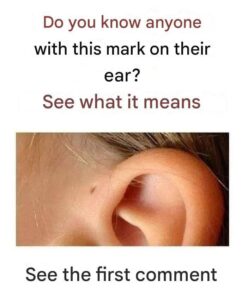When we think of rare physical traits, we often picture striking features that stand out.
Yet some unusual traits are so small they go unnoticed—even by the person who has them.
One example is the tiny hole or dimple near the top of the ear, known as a preauricular sinus. At first glance, it may look like a small birthmark or piercing, but it’s neither.

A preauricular sinus, also called a preauricular pit or fistula, is a small congenital opening that forms during early fetal development—around the sixth week of gestation. It happens when parts of the ear don’t fully fuse and is often hereditary, meaning it can run in families.
The condition can appear on one or both ears, though having it on both sides is rare. Most people never experience issues, and it’s considered harmless. However, in some cases, the small pit can become infected, leading to swelling or pain.
Infections are usually treated with antibiotics, but if they recur, minor surgery may be needed to remove the sinus entirely. Doctors generally advise keeping the area clean and monitoring for any redness or discomfort.
Though uncommon, the preauricular sinus is a fascinating reminder of how small genetic variations shape our individuality. It’s one of those traits that show just how diverse and intricate human development can be.
Interestingly, some researchers have speculated that these tiny holes might have evolutionary links to our ancient aquatic origins. Evolutionary biologist Neil Shubin has suggested they could be remnants of fish gills—though this theory remains unproven.
While the idea is intriguing, experts agree the condition itself is harmless and poses no health risk for most people.
Ultimately, these small ear dimples serve as quiet reminders of our shared biology—and how every body carries tiny traces of the past.





